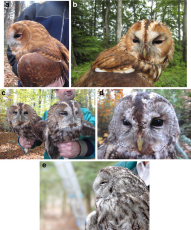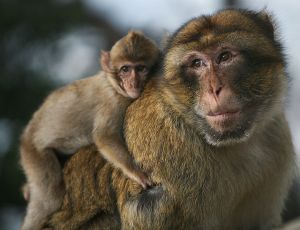I filmed this footage while carrying out fieldwork on Verreaux’s sifaka in the spiny forest of Mahavelo, Madagascar. The music is Whitewater by Σ-Fly.
Monthly Archives: July 2013
#004 Avian Plumage
The primary functions of feathers are that of flight and protection from the environment, such as insulation, but avian plumage is also very important in communication between individuals. The colours, markings, and display of feathers have all been documented to be key elements in mate attraction, species recognition and conspecific warning threats.
When considering sexual selection, the traits the females prefer in males tend to put the male in danger of death, as they make him more visible to predation and competition from conspecifics. Exaggerated feathers also hinder survival by interrupting aerodynamics, making it more difficult to escape danger. However, males that are able to harbour these traits and survive are most attractive to females and enhance their chances of passing on their genes, increasing their reproductive success.
Behavioural qualities such as rates of aggression and sexual acitivity can be inferred from plumage. Silva at al. (2013) studied melanism in tawny owls (Strix aluco) to determine whether this provided information on anti-predator and territory defence mechanisms. Individuals of these species show a wide spectrum of variation between individuals in the proportion of melanin pigments-it has been found the offspring of dark reddish parentage, when in optimal conditions, will grow faster than individuals with lighter coloured parents. It is therefore expected that the parents of faster growing individuals may be more aggressive in an effort to protect their reproductive effort. This study was experimental and modified the number of nestlings in order to determine if parents of different pigmentation adapted their defensive behaviours depending on the size of their brood. It was found that females of a dark plumage were more likely to behave aggressively than lighter coloured individuals, that aggression was more prominent among individuals with enlarged broods, and also when the offspring were older. Predation on nests with darker coloured parents was lower than that at lighter-coloured individuals’ nests. Delayed plumage maturation is a delay in the development of plumage with age, without a delay in sexual maturity, resulting in young adult birds displaying a sub-adult plumage. This is common in many species of tropical bird, including Red-backed Fairy wrens (Malurus melanocephalus) and is thought to reduce the risk of aggressiveness from mature males to young birds who are just starting out. Coady and Dawson (2013) studied delayed plumage maturation in Tree Swallows (Tachycineta bicolor), “one of only two species of North American passerines where females exhibit DPM rather than males”. In this species the subadult plumage is mostly brown and the adults have iridescent blue-green plumage, it is thought that the function of this is to reduce competition between conspecific females when they are seeking males in possession of nest sites. In agreement with this, Coady and Dawson (2013) found that aggression towards after second year females displaying adult plumage was much higher from resident females compared with aggression towards second year females displaying sub-adult plumage, as sub-adult individuals are presumably deemed less experienced and less of a threat to adult birds.
Delayed plumage maturation is a delay in the development of plumage with age, without a delay in sexual maturity, resulting in young adult birds displaying a sub-adult plumage. This is common in many species of tropical bird, including Red-backed Fairy wrens (Malurus melanocephalus) and is thought to reduce the risk of aggressiveness from mature males to young birds who are just starting out. Coady and Dawson (2013) studied delayed plumage maturation in Tree Swallows (Tachycineta bicolor), “one of only two species of North American passerines where females exhibit DPM rather than males”. In this species the subadult plumage is mostly brown and the adults have iridescent blue-green plumage, it is thought that the function of this is to reduce competition between conspecific females when they are seeking males in possession of nest sites. In agreement with this, Coady and Dawson (2013) found that aggression towards after second year females displaying adult plumage was much higher from resident females compared with aggression towards second year females displaying sub-adult plumage, as sub-adult individuals are presumably deemed less experienced and less of a threat to adult birds.
Coady, C. D. Dawson, R. D. 2013. Subadult Plumage Color of Female Tree Swallows (Tachycineta bicolor) Reduces Conspecific Aggression During the Breeding Season. The Wilson Journal of Ornithology. 125(2): 348-357.
Silva et al. 2013. Melanin-based Colour Polymorphism Signals Aggresive Personality in Nest and Territory Defence in the Tawny Owl (Strix aluco). Behav. Ecol. Sociobiol. 67: 1041-1052.
#003 Primates and Climate
Barbary macaques (Macaca sylvanus) living in the mountains of Morocco and Algeria are exposed to drastic changes in their environmental conditions throughout the year, experiencing the polarities of cold winters and very hot summers. Majolo et al. (2013) looked at how such climatic variation influences this species’ activity budgets. They studied habituated groups of Barbary macaques in Moroccoa using scan samples, and recorded air temperature and humidity.
Climatic factors such as air temperature and precipitation are important considerations in terms of conservation as they influence the acitivity budgets of animals, determining their survival in different habitats. Majolo et al. (2013) found that throughout the year, feeding time varied significantly, with more time spent feeding during snowy months, and that feeding time was higher in the mid-morning and late afternoon. They found that high air temperature reduced time spent feeding, with time spent resting increasing in hot months. This study concluded that it would be intuitive to establish protected areas in the region of the Atlas mountains at lower altitudes, where the milder conditions may accommodate population growth of this endangered species.
Majolo, B. et al. 2013. The Effect of Climatic Factors on the Activity Budgets of Barbary Macaques (Macaca sylvanus). Int. J. Primatol. 34:500-514.
#002 Music Video for Monoganon
I collaborated with my friend John to produce a music video for his band Monoganon’s latest single, Wasted Teens.
The video uses footage I recorded on my travels in Madagascar and Ecuador, and features an array of wildlife including Verreaux’s sifaka, radiated tortoises and white-plumed antbirds. The video also displays shots of the landscape filmed from aeroplanes and cars.
The single was released by Fence Records and featured here:
http://www.fencerecords.com/shop/postcard002/

I graduated with a BSc in Zoology from the University of Glasgow in June 2013. As part of this degree, I carried out a behavioural study on Verreaux’s sifaka (pictured), a folivorous arboreal lemur which is endemic to Madagascar and classified as vulnerable. The study was carried out between June-July 2012 in the dry season.
The title of my research project was “The Effect of a Disturbed Habitat on the Activity Budgets, Habitat and Feeding Preferences, and Home Range Size of Verreaux’s Sifaka”. In order to carry out this work I used scan and focal sampling, PCQ sampling, vegetation sampling and GPS marking. I analysed my data using Minitab and Primer.
I am now working on using the data collected and the results acquired to produce a scientific paper.
